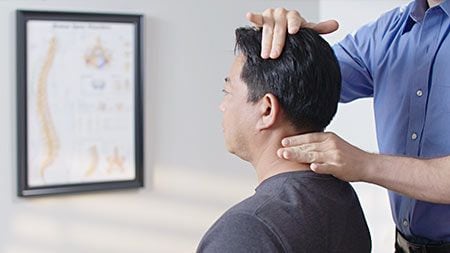
The word “chiropractic” is a combination of two Greek words that together mean “done by hand.” Chiropractic therapies and techniques are unique because they involve actual therapeutic touch, either by hands or a handheld therapy tool. One of the most important aspects of chiropractic care is that it can be customized for each patient depending on pain level, location and tolerance. Adjustments are diverse and adaptable and can be done sitting or lying faceup or facedown. There are even some chiropractic techniques and therapies that can be done while you are standing.
Training
Chiropractors have spent a significant amount of time in school learning how and why to treat patients. According to the American Chiropractic Association, “Because of the hands-on nature of chiropractic, and the intricate adjusting techniques, a significant portion of time is spent in clinical training.” Overall, chiropractors spend over 4,200 post-graduate hours in chiropractic school learning about anatomy, physiology, biochemistry, clinical examination and diagnosis, psychology and hands-on technique training.
Chiropractic students learn a wide variety of techniques, and for many, training and experience with adjusting techniques and other therapies goes beyond chiropractic school and into continued education after graduation. To stay licensed, chiropractors have to complete a certain number of additional education hours every one to three years, depending on the state. There are quite a few options for chiropractors wanting to learn other techniques and therapies to improve outcomes for patients. Examples of such courses include specialized training in the treatment of children, pregnancy treatment, muscle testing and treatment, sports medicine and soft tissue work, among others.
What to Expect
Most chiropractic techniques and therapies are hands-on. However, there are also chiropractic treatments that use a specialized handheld tool for those patients who may need a lighter touch when being adjusted. The tool may be manual or electronic, and in both cases it is directly controlled by the chiropractor. Depending on your condition, the level of your pain and your comfort in a certain position, you may be asked to sit, stand or lie on your stomach, back or side for treatment. If you have discomfort in a particular position, do not hesitate to let us know. There are often small changes we can make to the technique to aid your comfort.
Which Treatment Is Right for Me?
There are many things chiropractors consider when deciding with you which techniques may be the best choice for your treatment. These considerations include the location and level of your pain, your ability to remain in a particular position for approximately 30 seconds, and the length of time you’ve been experiencing the problem. We may also want to talk with you about your activity level, health history and family history. To identify the cause of your condition, we consider this information and perform a full examination consisting of orthopedic and/or neurologic tests in addition to determining how well particular joints are or are not moving. An x-ray or other testing may be requested before a diagnosis is made.
We will then discuss treatment plan options and recommendations with you to get you back to feeling and functioning well. Other therapies may be used as well to improve the effects of the chiropractic adjustment. Because no two people are exactly alike, you may not receive the same treatment as your friend or relative who has the same condition.


